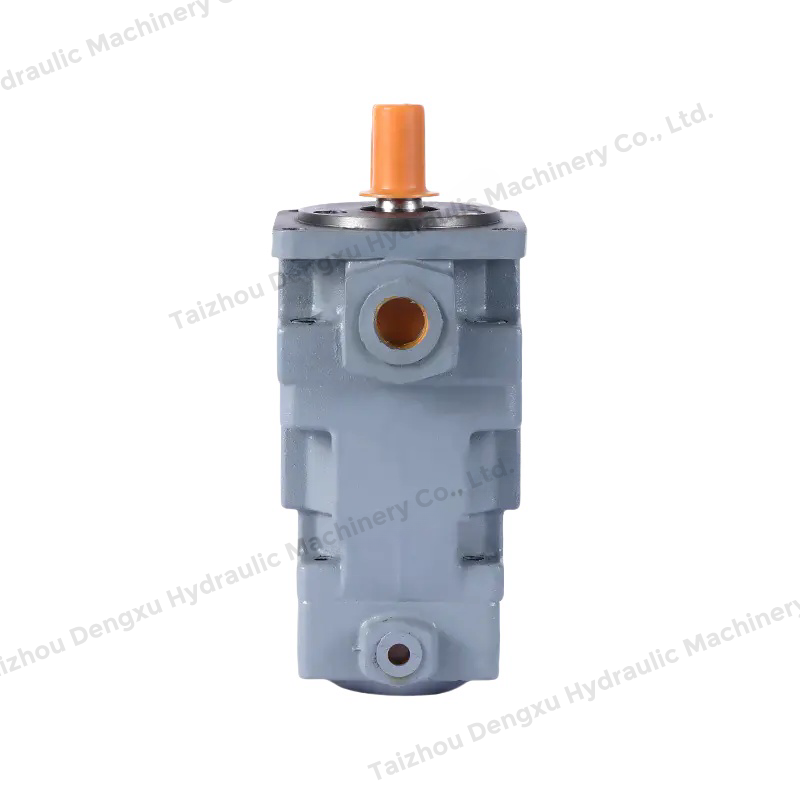Material Selection and Component Preparation

The production of a Hydraulic Variable Vane Pump begins with careful material selection and component preparation. The materials chosen must meet high standards for durability, strength, and resistance to wear, as the pump operates under high pressure and in various industrial environments. Common materials include stainless steel, cast iron, and aluminum alloys, each offering specific advantages depending on the pump's application.
Material Selection: Ensures strength, wear resistance, and corrosion protection.
Component Preparation: Involves casting, forging, or machining raw materials.
Quality Standards: Materials are inspected to ensure they meet design requirements.
In the early stages of manufacturing, the housing, rotor, vanes, and side plates of the Hydraulic Variable Vane Pump are formed using precision casting or forging methods. These processes help create dense and defect-free metal structures that can withstand hydraulic pressure without deformation. After shaping, the components undergo surface treatments, such as deburring and polishing, to remove any imperfections that could affect performance.
Proper preparation at this stage ensures that all parts fit together accurately, reducing the risk of internal leakage and enhancing the pump's efficiency. Manufacturers also test the raw materials for hardness, tensile strength, and resistance to fatigue, as these properties directly impact the longevity of the Hydraulic Variable Vane Pump once it is in operation.
Precision Machining and Assembly
Once the components are prepared, the next phase in producing a Hydraulic Variable Vane Pump involves precision machining and assembly. This stage is critical because the pump's performance depends on the accurate alignment and tight tolerances of its moving parts.
Computer numerical control (CNC) machines are widely used in the production of Hydraulic Variable Vane Pumps, as they allow for exact cutting, drilling, and grinding of each component. Precision is vital because even the smallest deviation can affect the flow rate and pressure control of the pump. The rotor and vanes must fit precisely into the housing, and the side plates must seal effectively to prevent fluid leakage.
During assembly, technicians carefully install each component, ensuring correct positioning and alignment. Lubricants and sealing materials are applied where necessary to enhance performance and reduce friction. Each Hydraulic Variable Vane Pump is tested for proper vane movement and smooth rotation of the rotor to verify that the machining and assembly processes meet required standards. This meticulous approach guarantees that the pump operates efficiently, maintaining both flow stability and pressure control under varying loads.
Testing, Quality Assurance, and Final Adjustments
The final stage of manufacturing a Hydraulic Variable Vane Pump focuses on rigorous testing, quality assurance, and final adjustments. This ensures that every pump leaving the factory meets the performance and safety standards required for industrial applications.
- Performance Testing: Measures flow rate, pressure, and efficiency.
- Leakage Tests: Detects any internal or external fluid loss.
- Durability Checks: Simulates long-term operation to verify reliability.
Before shipment, each Hydraulic Variable Vane Pump is subjected to performance tests that evaluate its output capacity and pressure control. These tests help identify any inconsistencies caused by minor assembly errors or machining defects. Hydraulic oil is circulated through the system to check for leaks, noise, or vibration, and any deviations are corrected through fine adjustments.
In addition to functional testing, visual inspections and surface evaluations are performed to ensure that the pump's exterior is free from cracks or defects. The internal components are examined for wear resistance and coating quality. Only after passing all these evaluations does the Hydraulic Variable Vane Pump receive final approval for packaging and distribution.
Manufacturers may also conduct endurance testing, where pumps are operated continuously for extended periods to measure wear and heat generation. These tests confirm that the Hydraulic Variable Vane Pump can maintain stable performance even under demanding operating conditions. Through strict quality assurance procedures, manufacturers ensure that each unit delivers consistent reliability, efficiency, and service life.

 Search
Search
